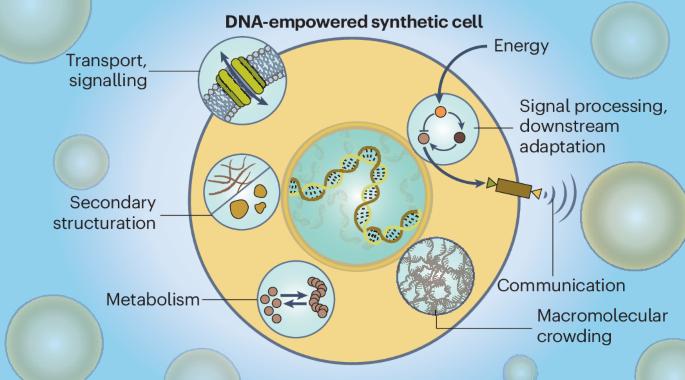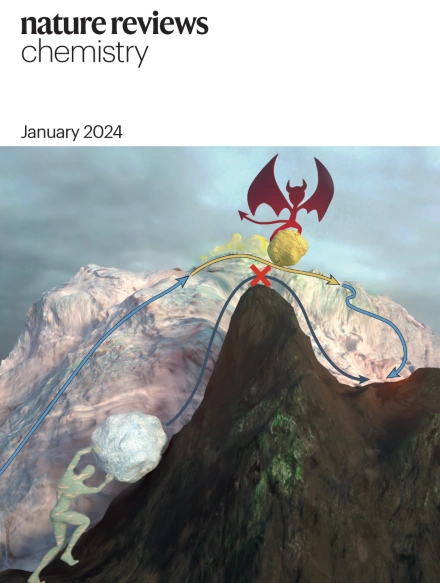DNA 驱动的合成细胞是最基本的生命形式。
IF 38.1
1区 化学
Q1 CHEMISTRY, MULTIDISCIPLINARY
引用次数: 0
摘要
细胞是生命的基本单位,协调着错综复杂的功能--运动、适应、复制、通信和组织内的自组织。细胞源于时空组织结构和机械,加上信号网络中的信息处理,体现了 "传感器-处理器-执行器 "范式。我们能否从这些过程中获得启示,构建出具有类似生命特性的原始人工系统?利用全新设计方法,我们能揭示生命进化的路径吗?本综述讨论了利用结构和动态 DNA 纳米科学的强大工具箱在制作合成细胞方面取得的进展。我们描述了 DNA 如何作为一种多功能工具来设计整个合成细胞或亚细胞实体,以及 DNA 如何实现复杂的行为,包括自适应和互动过程中的运动和信息处理。我们描绘了 DNA 驱动合成细胞的未来发展方向,设想了合成细胞在群落内以及与活细胞进行交流的互动系统。本文章由计算机程序翻译,如有差异,请以英文原文为准。


DNA-empowered synthetic cells as minimalistic life forms
Cells, the fundamental units of life, orchestrate intricate functions — motility, adaptation, replication, communication, and self-organization within tissues. Originating from spatiotemporally organized structures and machinery, coupled with information processing in signalling networks, cells embody the ‘sensor–processor–actuator’ paradigm. Can we glean insights from these processes to construct primitive artificial systems with life-like properties? Using de novo design approaches, what can we uncover about the evolutionary path of life? This Review discusses the strides made in crafting synthetic cells, utilizing the powerful toolbox of structural and dynamic DNA nanoscience. We describe how DNA can serve as a versatile tool for engineering entire synthetic cells or subcellular entities, and how DNA enables complex behaviour, including motility and information processing for adaptive and interactive processes. We chart future directions for DNA-empowered synthetic cells, envisioning interactive systems wherein synthetic cells communicate within communities and with living cells. Structural and dynamic DNA nanosciences offer unique tools for engineering bottom–up synthetic cells. This Review provides a holistic overview for using DNA as a structural material, for designing functional entities, and for information-processing circuits for adaptive and interactive behaviour.
求助全文
通过发布文献求助,成功后即可免费获取论文全文。
去求助
来源期刊

Nature reviews. Chemistry
Chemical Engineering-General Chemical Engineering
CiteScore
52.80
自引率
0.80%
发文量
88
期刊介绍:
Nature Reviews Chemistry is an online-only journal that publishes Reviews, Perspectives, and Comments on various disciplines within chemistry. The Reviews aim to offer balanced and objective analyses of selected topics, providing clear descriptions of relevant scientific literature. The content is designed to be accessible to recent graduates in any chemistry-related discipline while also offering insights for principal investigators and industry-based research scientists. Additionally, Reviews should provide the authors' perspectives on future directions and opinions regarding the major challenges faced by researchers in the field.
 求助内容:
求助内容: 应助结果提醒方式:
应助结果提醒方式:


